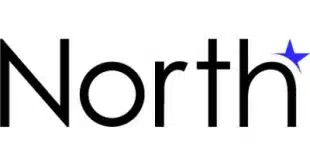Credit card interchange has come under assault, and not for the first time. Now, though, the stakes are higher than ever.
The cleverly crafted “Credit Card Competition Act of 2023” from Sens. Durbin, Marshall, Welch, and Vance is the latest salvo in a forever war against payments-industry fees, including how they’re set and who pays them. It’s part of an epic struggle in which the industry has been beating a managed retreat worldwide for decades.
The CCCA would require 32 politically unsympathetic credit card issuers, each with more than $100 billion in assets (like Bank of America, Capital One, Chase, Citi, U.S. Bank, and Wells Fargo), to offer merchants a routing choice between two networks for every credit card payment. The top ten covered issuers control roughly 80% of Mastercard and Visa credit-card purchase transactions.
The CCCA targets Mastercard and Visa, America’s and the world’s leading retail-payment networks, albeit without naming them.
The bill’s sponsors aim to commoditize credit-card routing and thereby devastate interchange and network fees paid by merchants. Because it would harm issuers, smaller issuers that politicians of all stripes profess to love would be exempt.
Richard Durbin, Illinois’s senior senator, didn’t mandate interchange price controls in the CCCA, as the eponymous Durbin Amendment did for debit. He wants to sell his bill as pro-competition. Even Congress understands price controls aren’t.
Incidentally, the CCCA would also authorize and invite the Fed to ban China’s monopoly card network China UnionPay as a national security threat. That should bolster political support on both sides of the aisle.
A Race to the Bottom
The United States is the most competitive and, in some respects, the most innovative payments market in the world. “Card” networks, alternative payment systems, cash, checks, early-stage open-banking payments, Zelle, Cash App, and perhaps soon stablecoins and a Fed digital dollar, compete in retail payments.
With huge economics at stake, there’s plenty of political theater.
CCCA supporters like the Merchants Payments Coalition and the consultancy CMSPI contend that, while the bill would reduce interchange, it wouldn’t destroy popular general-purpose rewards. This is disingenuous, since they hope it will eliminate interchange and general-purpose rewards.
Critics, however, pillory the bill as an existential threat to cardholders, warning it would eliminate popular credit card rewards and compromise payment security.
So what’s likely?
The CCCA would have a bigger and more immediate impact on the competitive dynamics of network routing than even the Durbin Amendment did. Network fees would be hammered, though the impact on interchange would be modest, if that.
The U.S. has four national credit-card networks: Visa, Mastercard, American Express, and Discover. Foreign networks China UnionPay and JCB compete in this market, albeit with smaller acceptance footprints. If the Fed rated them acceptable networks, either might use the CCCA to build a U.S. issuing beachhead.
The huge processors Fiserv Inc. and FIS Inc. own the national debit networks Star and Accel (Fiserv) and NYCE (FIS), and might have a strategic interest in providing credit card routing. However, credit card routing could quickly become a race to the bottom—which is the CCCA’s intent. Networks could find themselves bidding and paying to route each credit-card transaction.
Interchange Dynamics
Virtually all U.S.-issued credit cards are signature-authenticated. Most merchants, therefore, would quickly enjoy routing choice off- and online for all U.S.-issued credit card transactions, so long as they accepted all U.S. credit card networks.
Australia’s national debit network, EFTPOS, for many years paid merchants for debit transactions. If the CCCA required covered issuers to enable all national credit-card networks on each card, network and interchange fees would plummet and similarly go negative.
If only Visa, Mastercard, American Express, and Discover competed for credit-card routing, issuers could comply by enabling the combinations Visa and Amex, Visa and Discover, Amex and Discover, Mastercard and Amex, or Mastercard and Discover. But not Mastercard and Visa.
To win transactions, networks would have to be enabled by issuers and picked by merchants, or by processors on their behalf. To win issuers, networks would have to keep interchange as high as possible, reduce their own fees, and maximize acceptance while also adopting tools to boost volume and manage risk.
There would, however, be a countervailing force on the other side of the network. To win merchants, networks would want to lower interchange and network fees, provide better risk management, reduce payment friction, and generate incremental sales.
Network processing and licensing fees paid by merchants would come under enormous pressure, though issuers wouldn’t care how low they went. Merchants want to pay less and would route over the least-expensive network. Thus would the CCCA turn credit card routing into a commodity, disincenting investment and innovation.
At the same time, interchange dynamics would be harder to game. And issuers and merchants could affect payment share. Critically, issuers could drop any network that cuts interchange to win merchants.
Merchants, too, could drop any network offering the worst economics. But they’d have little reason to. They simply wouldn’t route transactions over that network unless it provided some other compelling benefit, such as card promotions producing incremental sales.
Indeed, if Visa, Mastercard, American Express, and Discover were the only networks competing for credit card routing, merchants could drop any network and not inconvenience domestic cardholders.
To avoid losing sales to tourists, business travelers, and online buyers using foreign-issued cards running on one of the global networks, merchants would loath dropping Mastercard or Visa.
Merchants would route based on the total cost of interchange and network fees. If interchange were higher, network fees would have to be lower. Unless they offered another compelling benefit, more expensive networks wouldn’t win any transactions.
The Line of Scrimmage
Because interchange is higher, it has attracted the ire of regulators, politicians, and the merchant lobby more than networks fees have. However, the fundamental objection of the interchange critics—that the network enjoys pricing power and merchants pay more: asymmetric pricing —obtains for network fees as well.
Payment networks are two-sided markets. Interchange, generally paid by merchants, dynamically balances participation on both sides of the network, maximizing holistic value. Interchange funds a buffet of cardholder benefits, including fee-free accounts, issuer innovation, and challenger banks. Network fees are asymmetrical, as well. Acquirer domestic and cross-border network fees have outpaced issuer fees.
The merchant lobby and many regulators object to asymmetric pricing, with merchants bearing more payment-system costs than consumers. There are, however, plenty of two-sided markets where one side pays more than the other, and where asymmetric pricing maximizes value. Radio, for example, is free for listeners while advertisers pay. Internet search is free while advertisers pay. Bars sometimes offer women, but not men, free drinks.
Competition and dynamic prices set in free markets are the optimal way of allocating resources to maximize value. Innovation occurs in lightly, not heavily, regulated sectors. The CCCA would unnecessarily interfere in a highly competitive market that works well and would put a damper on innovation. And, it would advance the line of scrimmage for acceptance-fee foes’ inevitable next assault on the payments industry.
—Eric Grover is principal at Intrepid Ventures.





